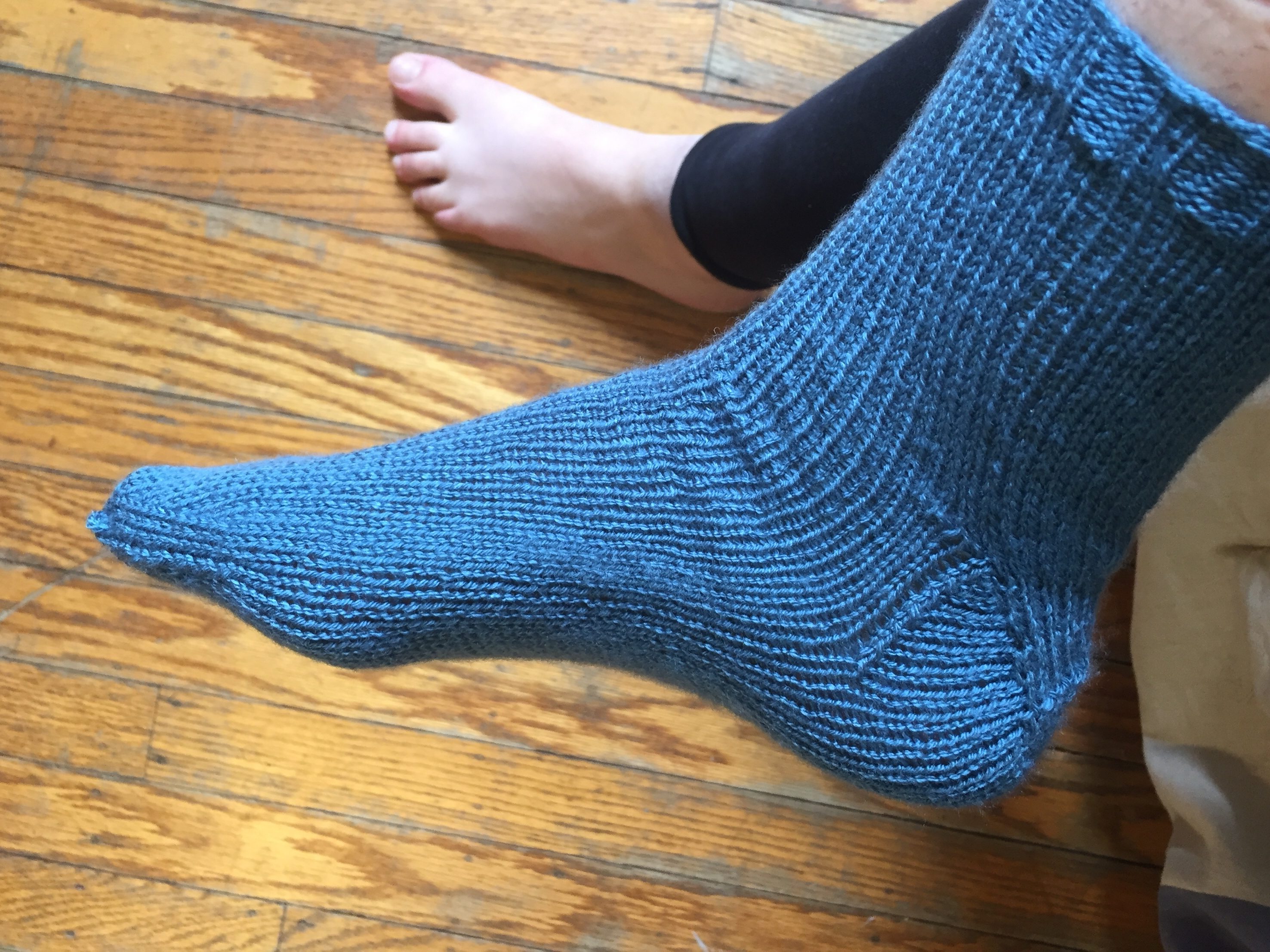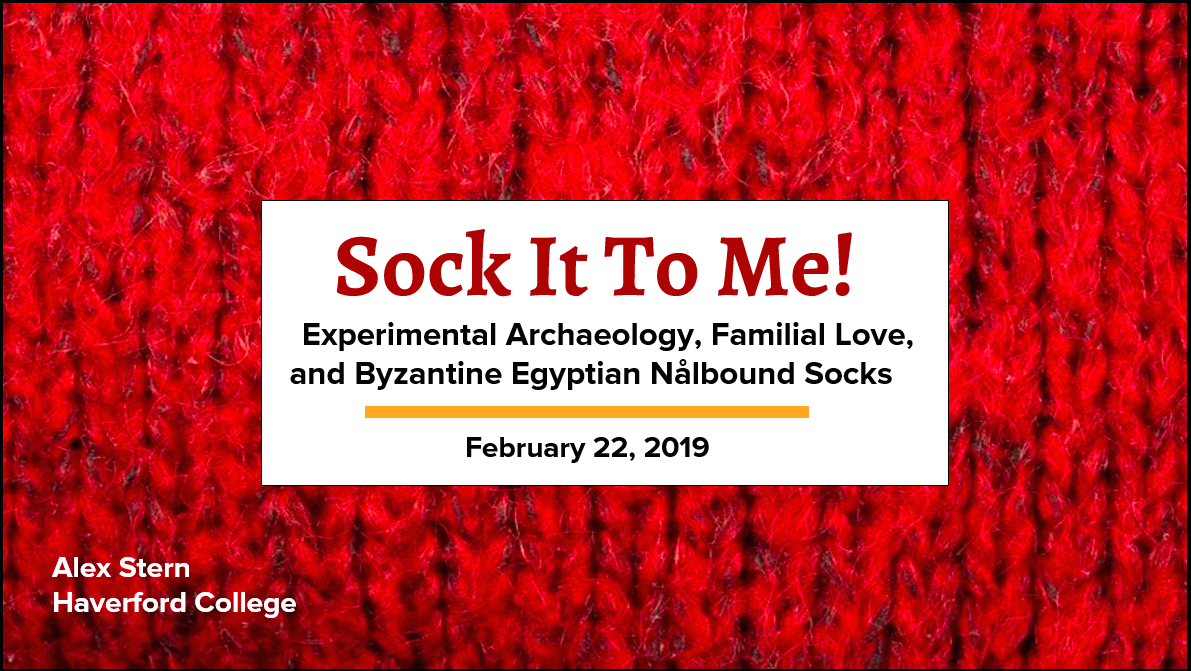 On a recent Friday I attended the latest event in Special Collection’s Friday Finds series. Alex Stern, a Haverford junior who is majoring in art history and archaeology at Bryn Mawr, facilitated a fun and fascinating workshop on nålbinding, an ancient weaving technique found in Byzantine Egypt.
On a recent Friday I attended the latest event in Special Collection’s Friday Finds series. Alex Stern, a Haverford junior who is majoring in art history and archaeology at Bryn Mawr, facilitated a fun and fascinating workshop on nålbinding, an ancient weaving technique found in Byzantine Egypt.
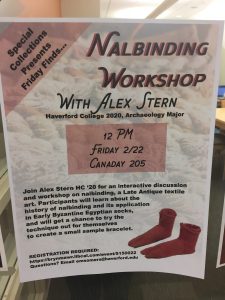
Alex became interested in early Byzantine textiles while taking the yearlong 360°course cluster “Textiles in Context.” During the fall semester of 2018, students in the program studied the significance of textiles in the Byzantine world as well as the technical analysis and conservation of ancient artifacts. This spring the 360° is curating an exhibit of early Byzantine textiles on loan from Thomas Jefferson University. These textiles have never been formally studied, which makes the students’ original research all the more exciting. Sadly, surviving textiles from this period are scarce, due to mishandling by early European archaeologists. Even in arid Egypt, which is a climate better suited to preserving fragile textiles, many such artifacts have been lost.
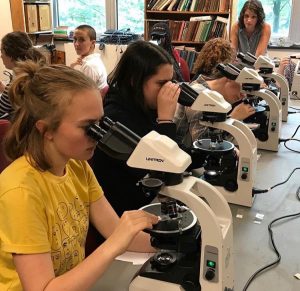
Alex (in yellow) and classmates during a lecture on polarized light microscopy, a technique that can assist in the identification of fibers. Image courtesy of Alex Stern.
In the course of her studies, Alex was intrigued by a very specific form of textiles: Byzantine socks made from nålbinding. Nålbinding is actually found in many cultures around the globe, such as in Scandinavia and South America. The final result looks identical to knitting but is produced quite differently. Whereas knitting uses a long ball of yarn and two needles, nålbinding uses only one needle and shorter pieces of yarn that are tied onto one another as needed. Although nålbinding has received a lot of attention from amateur crafters and experimental archaeologists—who have often produced valuable information about how these textiles looked and felt on the human body—it has received much less critical attention in academia.
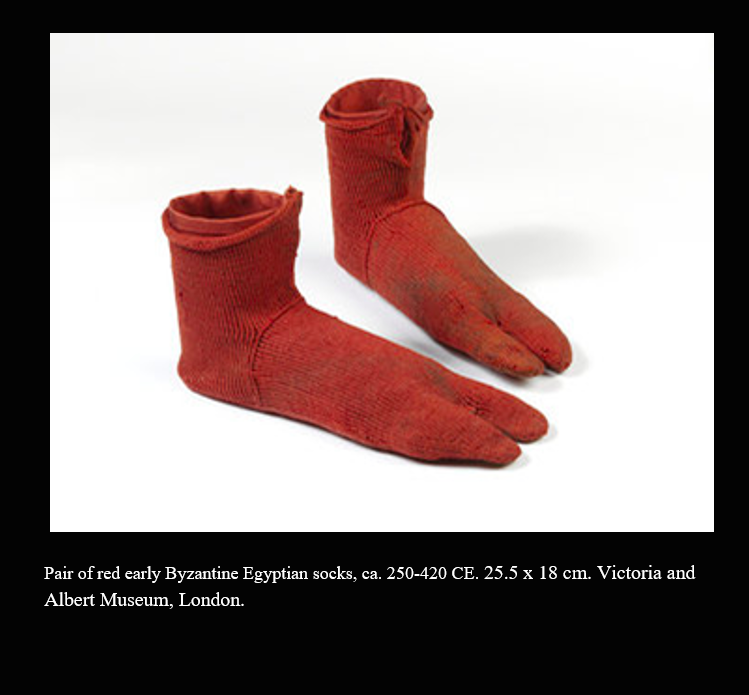
Example of Byzantine socks for adults. Powerpoint slide courtesy of Alex Stern.
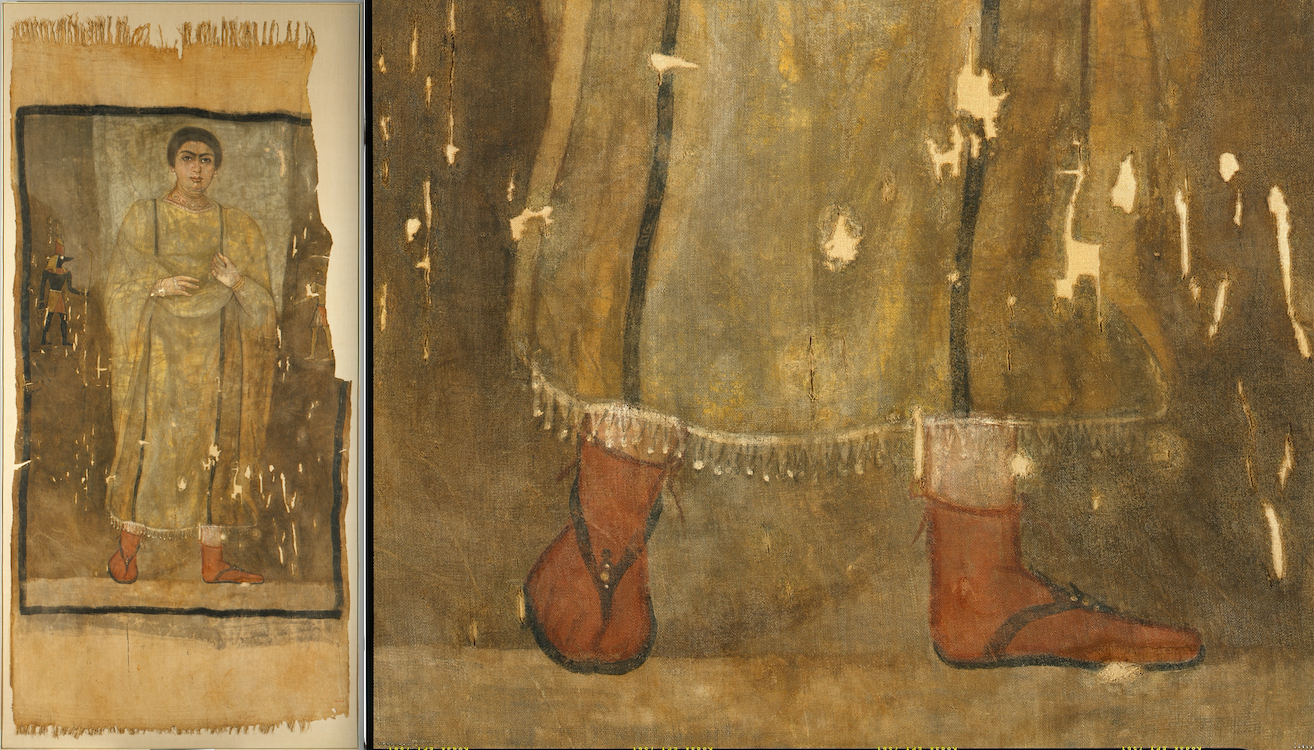
These images show a woman wearing socks with a split between the big toe and the rest of the foot, in order to accommodate her sandals. Zoom in on your browser to see the details better! Shroud of a Woman Wearing a Fringed Tunic, ca. 170-200 CE. Linen, paint (tempera). 230.2 x 110.8 cm. The Metropolitan Museum of Art, New York.
This is a shame, because nålbound socks are a window into early Byzantine life in Egypt. Alex’s presentation focused on child-sized socks, rare archaeological finds that can only be seen in a handful of museums. They are similar to their adult counterparts, but smaller in size and made in cheerful striped patterns; a PowerPoint slide showing examples of children’s socks elicited a round of “Aww!”’s from the audience. The children’s socks represent a compelling, and frankly adorable, bridge between our modern lives and a far-off civilization.
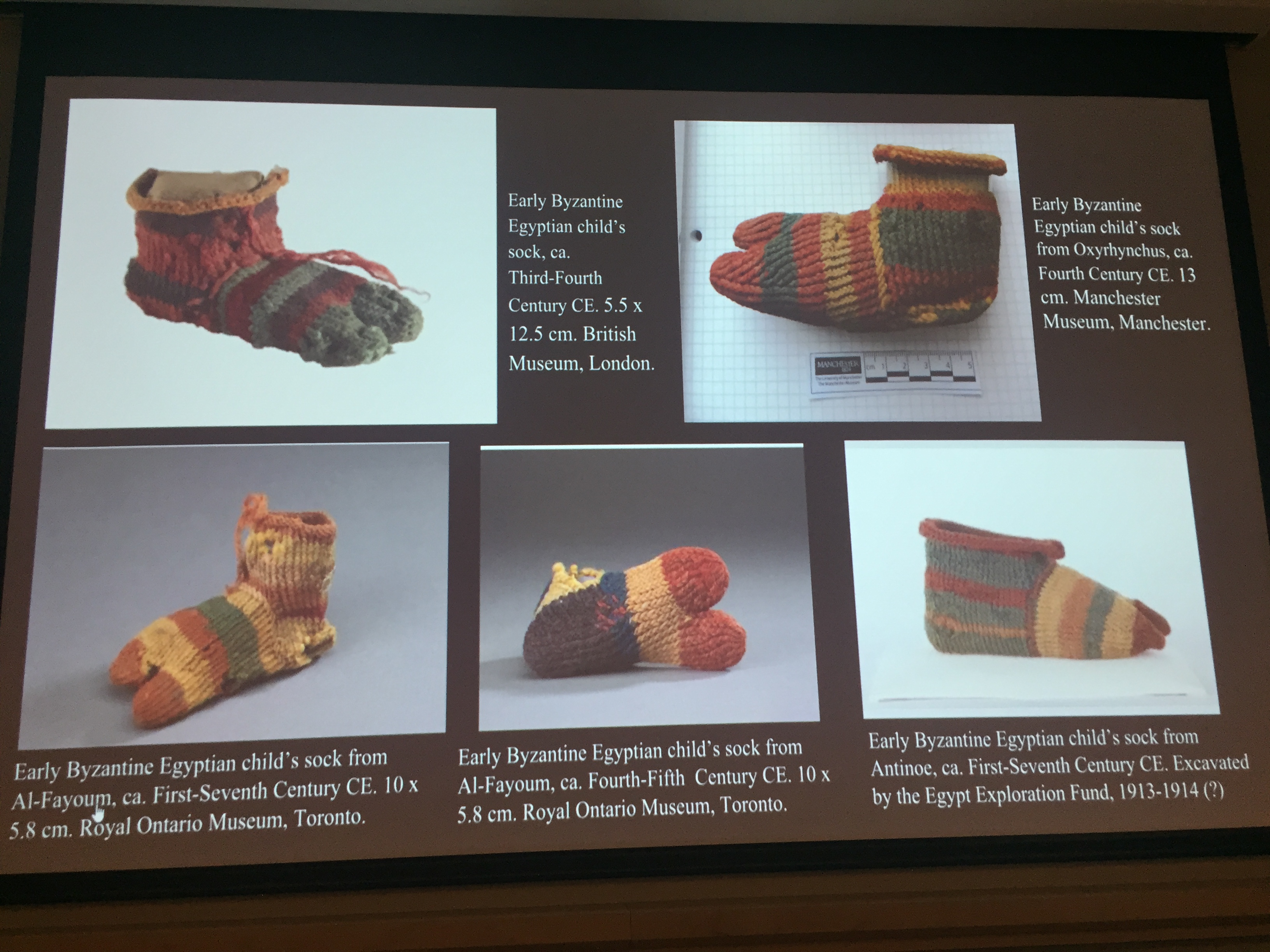
Examples of children’s’ socks from the Byzantine world. Powerpoint slide courtesy of Alex Stern.

Alex’s replica sock, using modern materials and ancient nålbinding technique.
Alex’s argument explored the possibilities that children’s socks suggest for studying the affective side of history. When she tried her hand at recreating a child’s sock, she was struck by how time-consuming and exacting the process was. She realized that the adults who made these socks were doing so as a labor of love for their children. Heartbreakingly, many of the children’s socks were found at funerary sites; Alex reminded us that although child mortality was much higher back then, the death of a child was no less profound or tragic than it would be today. The presence of the children’s socks shows how deeply the children who wore them were cared for.
After the formal presentation, all the workshop participants got to try their hand at nålbinding, with supplies to make small bracelets. Here’s a video of my struggling to make my bracelet. I will definitely need more practice before I can make socks!
My personal interest in this workshop stems from a few factors. First, my senior thesis deals with children’s literature. This past year I have started to realize how complex children’s culture can be, and how much we can learn about a culture based on its view of children. Second, in the non-academic realm, I recently returned to my old hobby of knitting, which I had abandoned for quite a few years, and learned how to make socks! With the help of a patient friend, a soft ball of blue yarn, and some good YouTube tutorials, I am immensely proud to say I have completed my first pair! This Friday Finds event was a great way to pair my intellectual and artistic interests. I definitely want to attend more in the future, and I can’t wait to see the 360’s Textile exhibit, opening April 18, 2019.